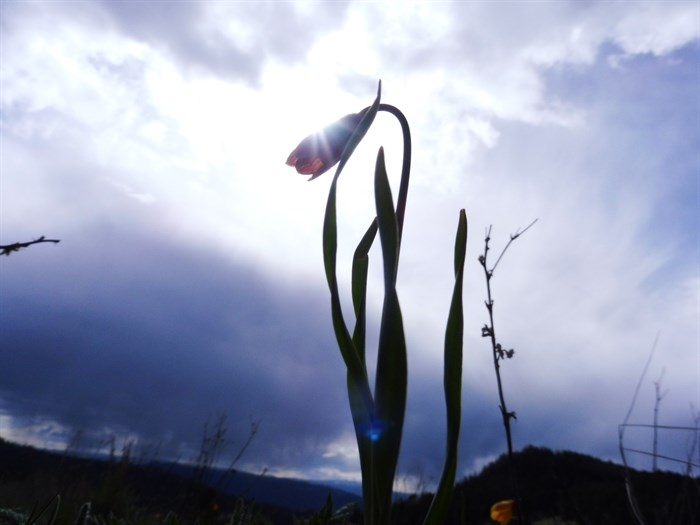Science
New study suggests icebergs may not have sunk the Titanic eventually – haveeruonline

- The new paper has solar flare activity Contribute to sinking of giant.
- Sun Emits a huge solar storm It can even cut off power on Earth.
- The correct (wrong) type of solar flare may have hindered your navigation. and Radio, affecting giantTrajectory and structure correspondence.
<p class="canvas-atom canvas-text Mb(1.0em) Mb(0)–sm Mt(0.8em)–sm" type="text" content="Just when we think we know everything there is to know about the Titanic—unsinkable ship, giant iceberg, "I’m the king of the world," etc.—along comes fascinating new research that raises big questions about what really transpired on the fateful night of April 14, 1912. Did a weather fluke from space actually cause the Titanic to sink?
” data-reactid=”37″>When you think you know everything we need to know giantIt comes with exciting new research that raises big questions about what really happened on the fateful night of April 14, 1912, including an irremovable ship, a huge iceberg, and “I’m the King of the World.” Weather coincidence from space in reality giant Sinking?
<p class="canvas-atom canvas-text Mb(1.0em) Mb(0)–sm Mt(0.8em)–sm" type="text" content="🚢 You love badass ships. So do we. Let’s nerd out over them together.” data-reactid=”38″>🚢 You like bad belly. We do too. Let’s bother them together.
<p class="canvas-atom canvas-text Mb(1.0em) Mb(0)–sm Mt(0.8em)–sm" type="text" content="The new study's key finding is that the northern hemisphere was in the grips of a “moderate to severe” magnetic storm that night, which could have altered the Titanic’s navigational readings, affecting both its planned course and the information the crew shared about their location during SOS signals.” data-reactid=”43″>The key finding of the new study was that the Northern Hemisphere was in the grip of a “middle to severe” magnetic storm that night. giantExplore readings of affecting all planned courses and Information shared by the crew about their location during the SOS signal.
The idea is very simple. The sun is covered with sunspots, powered by an innate nuclear generator that burns at millions of degrees. These, in turn, are distinguished by massive explosions over the size of the Earth, i.e. solar flares.
<p class="canvas-atom canvas-text Mb(1.0em) Mb(0)–sm Mt(0.8em)–sm" type="text" content="“In a matter of just a few minutes they heat material to many millions of degrees and release as much energy as a billion megatons of TNT,” NASA explains. These flares are often caused by magnetic changes or crashes, and their explosions cause magnetic ripples through the solar system.” data-reactid=”45″>“In just a few minutes, it heats the material to millions of degrees and releases as much energy as billions of megatons of TNT.” NASA explains. These flares are often caused by magnetic changes or collisions, and explosions cause magnetic ripples through the solar system.
It is intuitively understandable that the hottest things in the solar system swirl and experience extreme responses to a changing magnetic field. One of the reasons Earth is a successful habitat for life is that humans have a protective magnetic field that reflects huge amounts of solar radiation and cosmic winds. Otherwise, it will blow us to the surface of a planet like the bald, lifeless Mars.
<p class="canvas-atom canvas-text Mb(1.0em) Mb(0)–sm Mt(0.8em)–sm" type="text" content="This magnetic field also shifts and changes over time, especially as the magnetic poles move around Earth’s surface. Both animals and humans have learned to rely on the magnetic poles, in the form of manmade devices like compasses as well as animals’ sense for migration and navigation. Compasses, like clocks, must be adjusted to the correct units—like accounting for magnetic north as it moves around in a normal way.” data-reactid=”47″>This magnetic field moves and changes over time, especially as the stimulus moves around the Earth’s surface. Both animals and humans have learned to rely on stimuli in the form of artificial devices such as compasses. Animal sense of movement and navigation. A compass like a watch should be adjusted in the correct units as follows: Explain magnetic north It moves in the normal way.
<p class="canvas-atom canvas-text Mb(1.0em) Mb(0)–sm Mt(0.8em)–sm" type="text" content="It’s here that we rejoin the Titanic. Paper author Mila Zinkova has published four previous papers about the Titanic in the journal RMetS Weather, exploring a theory that mirages or other visual distortions played a part in the sinking. Now, Zinkova is using weather and space data to explore a different theory.” data-reactid=”48″>Here we are again giant. Paper author Mila Zinkova said Published 4 previous papers on giant In the journal RMetS Weather, A mirage, or other visual distortion contributed to the sinking. Now Zinkova is exploring other theories using weather and space data.
<p class="canvas-atom canvas-text Mb(1.0em) Mb(0)–sm Mt(0.8em)–sm" type="text" content="If a solar flare is severe enough, marked on that historic night by the telltale Aurora Borealis, it can skew the Earth’s magnetic field and wreak havoc with magnetic instruments like compasses. Even today, solar flares interfere with the electrical grid and space traffic, and truly precious file backups may be kept in protective Faraday cages.” data-reactid=”49″>If the solar flare is severe enough, and marked by Aurora Borealis on that historic night, it can distort the Earth’s magnetic field and cause confusion with magnetic devices like compasses. Even today, solar flares disrupt power grids and space traffic, and prevent valuable file backups. Can be stored in a protective Faraday cage..


Photo courtesy: Paramount-20th Century Fox
<p class="canvas-atom canvas-text Mb(1.0em) Mb(0)–sm Mt(0.8em)–sm" type="text" content="Zinkova posits that the impact on compasses affected the coordinates reported in distress signals. “The Titanic’s Fourth Officer Joseph Boxhall worked out the ship’s SOS position. Boxhall’s position was around 13 nautical miles (24 km) off their real position,” Zinkova writes.” data-reactid=”70″>Zinkova assumes that the effect on the compass affects the coordinates reported in the distress signal. “that much Titanic 4th Joseph Box Hall located the ship’s SOS. Boxhall’s location was about 24 kilometers (13 nautical miles) from its actual location,” wrote Zinkova.
<p class="canvas-atom canvas-text Mb(1.0em) Mb(0)–sm Mt(0.8em)–sm" type="text" content="But the rescue ship Carpathia likely had the same wrong information. “The compasses of the Carpathia could have been under the influence of the geomagnetic storm for 5.5 hours, before and after she received the Titanic’s SOS, and until she reached the lifeboats,” Zinkova continues. “Therefore, a possible combined compass error could have been one of the factors that contributed to the successful rescue of the Titanic survivors.”” data-reactid=”71″>But the rescue ship Carpathian You probably have the exact same misinformation. “Carpathia’s compass may have been affected by a geomagnetic storm. giantUntil she gets to the lifeboat, Zinkova continues. So the possible combined compass error could be one of the factors that contributed to the successful rescue of the Titanic survivors.”
<p class="canvas-atom canvas-text Mb(1.0em) Mb(0)–sm Mt(0.8em)–sm" type="text" content="This also points to how localized the solar flare phenomenon was. Ships in a certain radius received scrambled radio calls or missed them altogether. Back on land or even outside of the affected radius, everything seemed normal except when trying to contact or be contacted by the Titanic and other ships near it.” data-reactid=”72″>This also indicates how localized the solar flare phenomenon is. Vessels in a certain radius receive scrambled cordless calls or missed them all. Everything seemed normal, even when returning to land or outside the affected radius. giant And other ships nearby.
<p class="canvas-atom canvas-text Mb(1.0em) Mb(0)–sm Mt(0.8em)–sm" type="text" content="You Might Also Like” data-reactid=”73″>You may also like
Devoted web lover. Food expert. Hardcore twitter maven. Thinker. Freelance organizer. Social media enthusiast. Creator. Beer buff.
Science
Voyager 1 transmitting data again after Nasa remotely fixes 46-year-old probe – The Guardian


Earth’s most distant spacecraft, Voyager 1, has started communicating properly again with Nasa after engineers worked for months to remotely fix the 46-year-old probe.
Nasa’s Jet Propulsion Laboratory (JPL), which makes and operates the agency’s robotic spacecraft, said in December that the probe – more than 15bn miles (24bn kilometres) away – was sending gibberish code back to Earth.
In an update released on Monday, JPL announced the mission team had managed “after some inventive sleuthing” to receive usable data about the health and status of Voyager 1’s engineering systems. “The next step is to enable the spacecraft to begin returning science data again,” JPL said. Despite the fault, Voyager 1 had operated normally throughout, it added.
Launched in 1977, Voyager 1 was designed with the primary goal of conducting close-up studies of Jupiter and Saturn in a five-year mission. However, its journey continued and the spacecraft is now approaching a half-century in operation.
Voyager 1 crossed into interstellar space in August 2012, making it the first human-made object to venture out of the solar system. It is currently travelling at 37,800mph (60,821km/h).
The recent problem was related to one of the spacecraft’s three onboard computers, which are responsible for packaging the science and engineering data before it is sent to Earth. Unable to repair a broken chip, the JPL team decided to move the corrupted code elsewhere, a tricky job considering the old technology.
The computers on Voyager 1 and its sister probe, Voyager 2, have less than 70 kilobytes of memory in total – the equivalent of a low-resolution computer image. They use old-fashioned digital tape to record data.
The fix was transmitted from Earth on 18 April but it took two days to assess if it had been successful as a radio signal takes about 22 and a half hours to reach Voyager 1 and another 22 and a half hours for a response to come back to Earth. “When the mission flight team heard back from the spacecraft on 20 April, they saw that the modification worked,” JPL said.
Alongside its announcement, JPL posted a photo of members of the Voyager flight team cheering and clapping in a conference room after receiving usable data again, with laptops, notebooks and doughnuts on the table in front of them.
The Retired Canadian astronaut Chris Hadfield, who flew two space shuttle missions and acted as commander of the International Space Station, compared the JPL mission to long-distance maintenance on a vintage car.
“Imagine a computer chip fails in your 1977 vehicle. Now imagine it’s in interstellar space, 15bn miles away,” Hadfield wrote on X. “Nasa’s Voyager probe just got fixed by this team of brilliant software mechanics.
Voyager 1 and 2 have made numerous scientific discoveries, including taking detailed recordings of Saturn and revealing that Jupiter also has rings, as well as active volcanism on one of its moons, Io. The probes later discovered 23 new moons around the outer planets.
As their trajectory takes them so far from the sun, the Voyager probes are unable to use solar panels, instead converting the heat produced from the natural radioactive decay of plutonium into electricity to power the spacecraft’s systems.
Nasa hopes to continue to collect data from the two Voyager spacecraft for several more years but engineers expect the probes will be too far out of range to communicate in about a decade, depending on how much power they can generate. Voyager 2 is slightly behind its twin and is moving slightly slower.
In roughly 40,000 years, the probes will pass relatively close, in astronomical terms, to two stars. Voyager 1 will come within 1.7 light years of a star in the constellation Ursa Minor, while Voyager 2 will come within a similar distance of a star called Ross 248 in the constellation of Andromeda.
Science
iN PHOTOS: Nature lovers celebrate flora, fauna for Earth Day in Kamloops, Okanagan | iNFOnews | Thompson-Okanagan's News Source – iNFOnews


Photographers are sharing their favourite photos of flora and fauna captured in Kamloops and the Okanagan in celebration of Earth Day.
First started in the United States in the 70s, the special day on April 22 continues to be acknowledged around the globe. It’s a day to celebrate the planet and a reminder of the need for environmental conservation and sustainability, according to EarthDay.org.
These stunning nature photos show life in ponds and forests, in skies and on mountains, capturing the beauty and wonder of our local natural environments.
Area photographers shared some of their favourite finds and artistic captures. From frogs to flowers, the great outdoors is teeming with life.
If you have nature photos you want to share, send them to news@infonews.ca.








To contact a reporter for this story, email Shannon Ainslie or call 250-819-6089 or email the editor. You can also submit photos, videos or news tips to the newsroom and be entered to win a monthly prize draw.
We welcome your comments and opinions on our stories but play nice. We won’t censor or delete comments unless they contain off-topic statements or links, unnecessary vulgarity, false facts, spam or obviously fake profiles. If you have any concerns about what you see in comments, email the editor in the link above. SUBSCRIBE to our awesome newsletter here.


Science
An extra moon may be orbiting Earth — and scientists think they know exactly where it came from – Livescience.com


A fast-spinning asteroid that orbits in time with Earth may be a wayward chunk of the moon. Now, scientists think they know exactly which lunar crater it came from.
A new study, published April 19 in the journal Nature Astronomy, finds that the near-Earth asteroid 469219 Kamo’oalewa may have been flung into space when a mile-wide (1.6 kilometers) space rock hit the moon, creating the Giordano Bruno crater.
Kamo’oalewa’s light reflectance matches that of weathered lunar rock, and its size, age and spin all match up with the 13.6-mile-wide (22 km) crater, which sits on the far side of the moon, the study researchers reported.
China plans to launch a sample-return mission to the asteroid in 2025. Called Tianwen-2, the mission will return pieces of Kamo’oalewa about 2.5 years later, according to Live Science’s sister site Space.com.
“The possibility of a lunar-derived origin adds unexpected intrigue to the [Tianwen-2] mission and presents additional technical challenges for the sample return,” Bin Cheng, a planetary scientist at Tsinghua University and a co-author of the new study, told Science.
Related: How many moons does Earth have?
Kamo’oalewa was discovered in 2016 by researchers at Haleakala Observatory in Hawaii. It has a diameter of about 100 to 200 feet (approximately 30 to 60 meters, or about the size of a large Ferris wheel) and spins at a rapid clip of one rotation every 28 minutes. The asteroid orbits the sun in a similar path to Earth, sometimes approaching within 10 million miles (16 million km).
window.sliceComponents = window.sliceComponents || ;
externalsScriptLoaded.then(() => {
window.reliablePageLoad.then(() => {
var componentContainer = document.querySelector(“#slice-container-newsletterForm-articleInbodyContent-UG4KJ7zrhxAytcHZQxVzXK”);
if (componentContainer)
var data = “layout”:”inbodyContent”,”header”:”Sign up for the Live Science daily newsletter now”,”tagline”:”Get the worldu2019s most fascinating discoveries delivered straight to your inbox.”,”formFooterText”:”By submitting your information you agree to the Terms & Conditions and Privacy Policy and are aged 16 or over.”,”successMessage”:”body”:”Thank you for signing up. You will receive a confirmation email shortly.”,”failureMessage”:”There was a problem. Please refresh the page and try again.”,”method”:”POST”,”inputs”:[“type”:”hidden”,”name”:”NAME”,”type”:”email”,”name”:”MAIL”,”placeholder”:”Your Email Address”,”required”:true,”type”:”hidden”,”name”:”NEWSLETTER_CODE”,”value”:”XLS-D”,”type”:”hidden”,”name”:”LANG”,”value”:”EN”,”type”:”hidden”,”name”:”SOURCE”,”value”:”60″,”type”:”hidden”,”name”:”COUNTRY”,”type”:”checkbox”,”name”:”CONTACT_OTHER_BRANDS”,”label”:”text”:”Contact me with news and offers from other Future brands”,”type”:”checkbox”,”name”:”CONTACT_PARTNERS”,”label”:”text”:”Receive email from us on behalf of our trusted partners or sponsors”,”type”:”submit”,”value”:”Sign me up”,”required”:true],”endpoint”:”https://newsletter-subscribe.futureplc.com/v2/submission/submit”,”analytics”:[“analyticsType”:”widgetViewed”],”ariaLabels”:;
var triggerHydrate = function()
window.sliceComponents.newsletterForm.hydrate(data, componentContainer);
if (window.lazyObserveElement)
window.lazyObserveElement(componentContainer, triggerHydrate);
else
triggerHydrate();
}).catch(err => console.log(‘Hydration Script has failed for newsletterForm-articleInbodyContent-UG4KJ7zrhxAytcHZQxVzXK Slice’, err));
}).catch(err => console.log(‘Externals script failed to load’, err));
Follow-up studies suggested that the light spectra reflected by Kamo’oalewa was very similar to the spectra reflected by samples brought back to Earth by lunar missions, as well as to meteorites known to come from the moon.
Cheng and his colleagues first calculated what size object and what speed of impact would be necessary to eject a fragment like Kamo’oalewa from the lunar surface, as well as what size crater would be left behind. They figured out that the asteroid could have resulted from a 45-degree impact at about 420,000 mph (18 kilometers per second) and would have left a 6-to-12-mile-wide (10 to 20 km) crater.
There are tens of thousands of craters that size on the moon, but most are ancient, the researchers wrote in their paper. Near-Earth asteroids usually last only about 10 million years, or at most up to 100 million years before they crash into the sun or a planet or get flung out of the solar system entirely. By looking at young craters, the team narrowed down the contenders to a few dozen options.
The researchers focused on Giordano Bruno, which matched the requirements for both size and age. They found that the impact that formed Giordano Bruno could have created as many as three still-extant Kamo’oalewa-like objects. This makes Giordano Bruno crater the most likely source of the asteroid, the researchers concluded.
“It’s like finding out which tree a fallen leaf on the ground came from in a vast forest,” Cheng wrote on X, formerly known as Twitter.
Confirmation will come after the Tianwen-2 mission brings a piece of Kamo’oalewa back to Earth. Scientists already have a sample of what is believed to be ejecta from Giordano Bruno crater in the Luna 24 sample, a bit of moon rock brought back to Earth in a 1976 NASA mission. By comparing the two, researchers could verify Kamo’oalewa’s origin.
Editor’s note: This article’s headline was updated on April 23 at 10 a.m. ET.
-



 Health22 hours ago
Health22 hours agoSee how chicken farmers are trying to stop the spread of bird flu – Fox 46 Charlotte
-



 Investment23 hours ago
Investment23 hours agoOwn a cottage or investment property? Here's how to navigate the new capital gains tax changes – The Globe and Mail
-



 Science20 hours ago
Science20 hours agoOsoyoos commuters invited to celebrate Earth Day with the Leg Day challenge – Oliver/Osoyoos News – Castanet.net
-
News23 hours ago
‘A real letdown’: Disabled B.C. man reacts to federal disability benefit – Global News
-
News20 hours ago
Freeland defends budget measures, as premiers push back on federal involvement – CBC News
-



 Politics20 hours ago
Politics20 hours agoHaberman on why David Pecker testifying is ‘fundamentally different’ – CNN
-
Economy20 hours ago
The Fed's Forecasting Method Looks Increasingly Outdated as Bernanke Pitches an Alternative – Bloomberg
-
Business23 hours ago
Ottawa puts up $50M in federal budget to hedge against job-stealing AI – CP24










